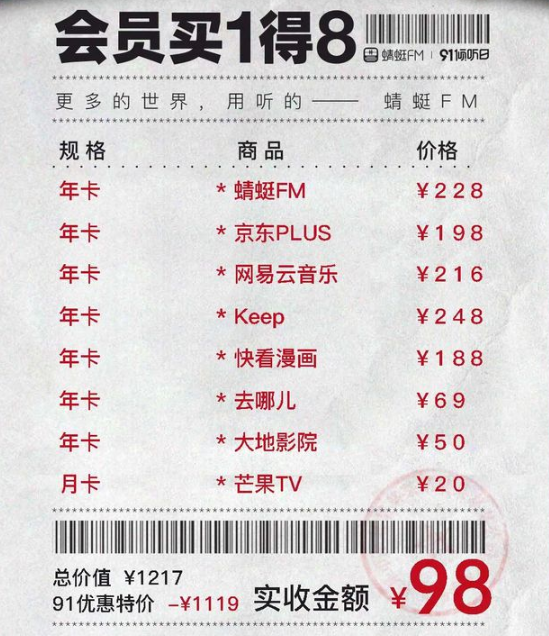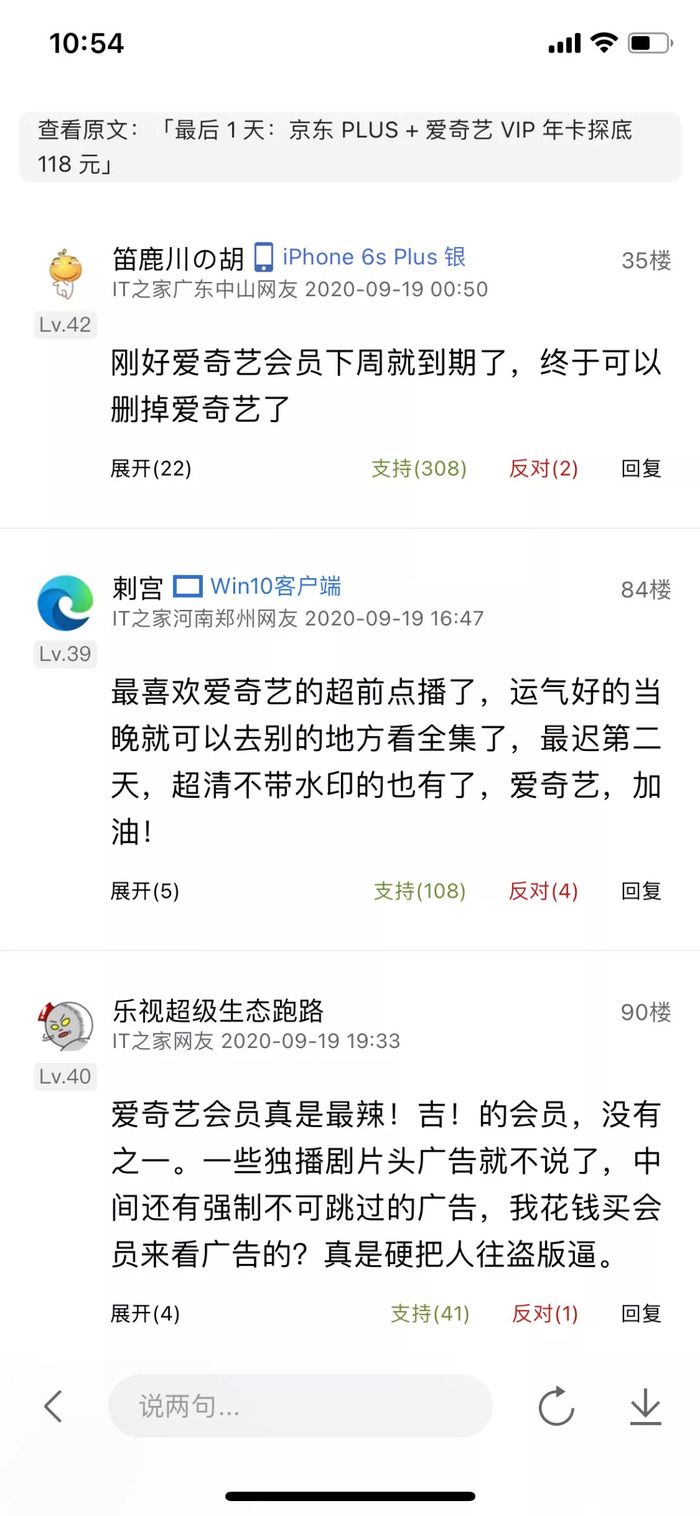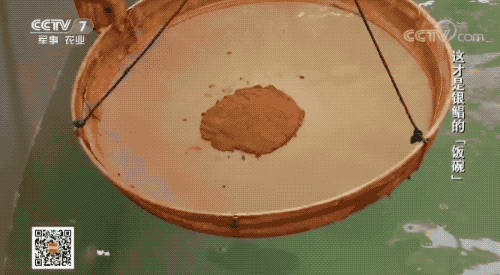Wen | Bear out of ink, please pay attention.
"The final interpretation right of the event belongs to our store", which is being used by more and more Internet companies to protect themselves.
In the summer of 2019, The Untamed was a hit, and Tencent video played an advanced on-demand game. Members could watch the finale in advance by paying 30 yuan. At noon the next day, the data showed that 2.5 million members had spent money on demand, that is, the total sales exceeded 75 million yuan.
At the end of the same year, Joy of Life was a hit, and Iqiyi launched 3 yuan/episode advance on demand, which was sued by users on the grounds of damaging members’ rights and interests. In the end, iQiyi lost the case and was sentenced to provide users with the original VIP membership rights. Although he was punished, iQiyi kept the advanced on-demand mode.

Not only that, according to the statistics of Yunhe, users’ willingness to pay for video platforms has gradually matured, and the membership process of the content of each platform is also accelerating. In the first half of this year, in the effective broadcast of dramas on the whole network, the effective broadcast of member content accounted for 31%, up 10 percentage points year-on-year. On the basis of basic members, a series of controversial value-added services and ladder charging models represented by advanced on-demand have gradually become the norm.
You have to spend money after paying, and there is VVIP after VIP. When the user enters the member pool, the platform updates the rules with a wave of his hand. Yesterday was Britney Spears, and suddenly she became Mrs. Niu.
Outside the video platform, similar cases of advanced on-demand have been everywhere in the internet circle. For example, Dragonfly FM, which is busy wiping its ass these days, clearly stated in black and white that members "buy 1 and get 8", but users paid "1" and found that the rights they wanted in "8" were out of stock, so they complained angrily. The dragonfly FM side said "first come, first served" and quietly changed the copy to "buy 1 get 7".
Excuse me, where is the most basic trust between people? Why should the platform repeatedly trample on the bottom line of members in violation of the spirit of contract? Who gave them courage and motivation?
Text: Binbin (please pay attention to the bear’s ink)
When the price bottoms out, first pull users into the membership pool.
I believe that everyone has found a trend. Whether it is a video website, an audio website, an e-commerce platform, a takeaway platform, etc., the price of each member package is constantly bottoming out.
To put it bluntly, the perception may not be too strong. Turn back the time and compare the current membership price with that of a few years ago.
Take iQiyi as an example, the price of gold VIP members is 198 yuan for 12 months. During various activities, the actual price purchased by users is often much lower than the official guide price.
In the Spring Festival of 2018, iQiyi launched a big promotion, and the annual card can be purchased for 118 yuan; In September of the same year, iQiyi and Pinduoduo held a joint promotion, which was called "unprecedented low price". The combined price of Gold Membership Annual Card and Pinduoduo Platform Coupon was only sold in 88 yuan.

Subsequently, through the popular joint membership promotion game in the industry, the membership price was successfully pulled down again. During the "Qiqi Carnival" in 2019, user 89 yuan can purchase the annual card of iQiyi Gold Member+JD.COM PLUS. It is worth noting that the original price of JD.COM PLUS membership is 299 yuan/year.
The official price is close to 200, and the actual price is less than 100 yuan. At the same time, members of other platforms give it for free. Do you think iqiyi has reached the bottom? Far from it. In order to highlight the cost performance, some platforms infinitely enlarge the "n" of "buy 1 get n", that is, users can receive the membership rights of N platforms when they purchase the membership services of their platforms.

Dragonfly FM recently went online and bought 8 for 1, and packaged membership services of 8 platforms, including Dragonfly FM, JD.COM PLUS, Netease Cloud Music, Keep, Watch Comics, Where to Go, Dadi Cinema and Mango TV. The paid-in amount was 98 yuan.
In the specialized member rights trading platform, the total transfer price of JD.COM PLUS Annual Card and Netease Yunnian Card alone has reached 100 yuan. In other words, the promotion activities of platform members have reached the bottom and become a wealth management project. If users successfully resell part of their rights and interests, they can enjoy the remaining member services while making money.
Unusually cheap, perhaps the most expensive.
Some insiders told Xiong Chumo, "Many platforms use VIP membership cards as a means of innovation, and they are bundled and sold at a very low price in the exchange of channel resources. Later, they can only find ways to achieve profitability in services such as pre-ordering and paying for high-quality content separately, which is a bit like in-app purchase."
This explains why the industry generally overpriced and frequently reduced prices, with the purpose of stimulating users’ impulsive consumption.
However, consumers have a steelyard in mind, and whether to place an order or not also has their own exquisite. For example, the recent "buy 1 get 8" membership activity of Dragonfly FM was exposed by China Consumer News. After paying 98 yuan, consumers found that the JD.COM PLUS membership had been exhausted, and it turned out that "buy 1 get 7" was inconsistent with the propaganda and was suspected of fraud. Up to now, there are as many as 563 complaints about this incident on the black cat complaint, and the reasons for complaints are also that members have not arrived in the account and are suspected of fraud.
Attract new members to pay and renew old members. It doesn’t matter how much the transaction price is. First, pull users into the member pool. On the one hand, this is conducive to improving the user stickiness of the platform and making the operational data look better. On the other hand, paying users are relatively better, with stronger ability and willingness to pay, which is screening for the next harvest.
The revenue is under pressure, and VVIP is the real purpose.
Price reduction attracts more users to recharge, which is usually packaged as a platform to return to users, with small profits but quick turnover. However, when small profits can’t stand the pressure of revenue, the real purpose of price reduction is gradually exposed.
There is no need to repeat the importance of user payment to the Internet platform. The number of large platforms is considerable, with hundreds of millions of users, each paying a dollar. The most typical is the video website. In recent years, the overall user payment atmosphere in the industry is getting better and better. The contribution of member users of some platforms has even surpassed the advertising business, becoming a new revenue pillar.
Taking iQiyi as an example, its Q2 financial report shows that its revenue in the second quarter was 7.4 billion yuan, of which membership service revenue was 4 billion yuan, which was stable at half of the country and increased by 19% compared with the same period in 2019.
In fact, since Q3′ s membership income surpassed advertising income for the first time in 2018, the performance of iQiyi’s membership income has been remarkable. In the case that the advertising revenue of the platform has been declining year after year, the rising membership revenue has driven the overall growth of iQiyi. As Gong Yu, CEO of Aiqiyi, said, "For the business model of Aiqiyi, user fees, especially monthly subscription fees, are still a target income in the future."
However, when the conversation turned, Gong Yu said, "The current gold membership price of iQiyi was actually set nine years ago, but it has not changed for nine years due to market competition. As our main income, we originally planned to study the membership price this year, but due to the COVID-19 epidemic, this matter was put on hold for the time being. Compared with the rich and high-quality content provided to users, this price is too low. "
These words are meant for users, but also for investors.
As we all know, price reduction means that the profit space is compressed, which is contrary to the purpose of increasing income. The official guide price of gold members of iQiyi has not changed for 9 years, and the actual transaction price is getting lower every year. It’s hard to ride a tiger, and it’s hard to get back. It’s hard for the price of members who have fallen to rise again.

At the same time, with the passage of time, the ceiling of Iqiyi’s membership has emerged. According to its official data, in mid-2016, the number of paid members of the platform was 20 million. By the end of 2017, the membership scale had increased to 50.8 million. In 2018, a total of 36.6 million was added, reaching 87.4 million. In Q2, 2019, this figure exceeded 100 million for the first time, and reached 107 million by the end of the year. In this year’s Q2 financial report, the number of members was 105 million, not rising but falling.
The scale growth is stagnant, there is no hope of raising the unit price, and the road to future growth will be blocked, and no one will sit still. Complementing Gong Yu’s complaint that the price is too low, iQiyi has taken a more effective step: it is not feasible for gold members to raise prices, so create another Star Diamond member. That is, VVIP after VIP.
"Advertising revenue and membership income can’t cover the cost. It is inevitable that the platform will explore value-added services and ladder payment outside the basic members. The loss problem of the video platform is more prominent, so the performance is more radical, "said the above-mentioned insiders.

According to the "Webcast Performance of Member Content in the First Half of 2020" released by Yunhe Data, as of June this year, more than 85% of the online dramas broadcast by iQiyi, Tencent Video, Youku and Mango TV were on-demand in advance. Some platforms choose a direct finale similar to iQiyi, and some platforms choose VIP to watch next week first. But no matter which mode, 3 yuan/Ji’s ability to absorb gold is imaginable.
Last year, the advance screening event in Joy of Life came first, which should belong to the rights and interests of paying users, but it has to be paid twice. In the face of the strong move of the rule makers, although users have obtained the support of jurisprudence, they still have to accept the reality that VOD is thriving ahead of schedule and VVIP is on top of it.
Many cases can also be found outside the video platform. For example, a few months ago, QQ music was tested in small batches, and advertisements were inserted in the middle of song playing, which attracted netizens to ask questions and collectively vomit. The industry will interpret this platform as a "coquettish operation" that is dissatisfied with the existing income and increases advertising space in disguise to generate income.
This also goes back to the reason why ordinary users should be brought into the membership pool first, and the platform will like to accept the new rules and continue to recharge. No, the platform has earned money from the basic membership package and an active user, and there is no loss in itself.
Mature mind, the second crop of leeks is not easy to cut.
After all, leeks are leeks, which should be cut, but I am afraid that this leek is not so easy to cut.
Looking back, in the early days of domestic Internet development, most platforms held the banner of free to attract users. Free network disk space, free high-speed download, free high-definition movies, free song download … In the cognition of many users, Internet service is equated with free. Therefore, at that time, the biggest threshold for the platform to save money from users’ pockets was that users did not establish the awareness of paying at all.
Today is different from the past. After years of market education, the overall paid atmosphere of the Internet is getting better and better. The expansion of the scale of paying users on various platforms is an example. This also means that the leeks that can be cut have basically been cut.
The external factors of Iqiyi’s growth dilemma should be attributed to this. Ten years after the establishment of the platform, the membership business has been online for nine years. It is conceivable that all the paid members that can develop have basically developed, and it is difficult to increase the membership scale substantially in the future.
However, investors will not sympathize with iQiyi. After all, there are still more than 10 billion loss holes to be filled every year. The 2019 financial report shows that iQiyi’s annual revenue is 29 billion and its net loss is 10.3 billion. Helpless, only swing the sickle at the second leek.
After the last round of harvesting, will the mature second-crop leek continue to pay the bill? Not necessarily.
Recently, Iqiyi and JD.COM launched a joint membership activity, and you can buy a two-member annual card for 118 yuan. "It’s just that the membership of iQiyi will expire next week, and I can finally delete iQiyi." In the comment area of a related report, this netizen comment won the most praise.

The strength of the discount is obvious, but netizens did not unanimously call for it, but rationally speculated to discuss whether 118 yuan is worth it.
Most of the supporters affirmed the quality of the platform dramas. "Iqiyi has a lot of suspense dramas recently, and" Hidden Corner "and" Silent Truth "are all good", and some netizens said that they had already recharged the dramas before; The reasons for opposing one faction are also quite sufficient, and collectively spit out the membership rights and experiences of iQiyi. "There are advertisements as well as members! You can’t skip it yet! There is also on-demand in advance! "
According to the marginal diminishing effect, the stimulating effect of price reduction methods that have remained unchanged for many years on users’ impulsive consumption is gradually weakening. "Last week was not just the bottom of the exploration, so it was explored again." Some netizens expressed dissatisfaction with the frequent bottom of prices. "Now I have to consider 99."
On the one hand, there is pressure from investors, on the other hand, there are complaints from users. The platform caught in the middle failed to give a satisfactory solution to both parties.
In business, it is understandable to explore new growth space. However, while being responsible for investors, the platform must also be responsible for users. The platform can provide high-quality value-added services, which is still the key for users to pay or not.
In November last year, Mango TV also sold the head IP "NZND Ice-breaking Concert" of the detective series to the audience in a single episode at the price of 3 yuan, a member of the single program, and 10 yuan, a non-member one week before the launch of Detective Star 5. The validity period was one week. However, because the purchased single piece of content is only a prelude to a feature film of a certain program, Mango TV’s advance on-demand water test response was flat, which not only lowered the douban score of the current program, but also was reprimanded by many fans for eating ugly.
Referring to foreign successful cases, although the growth soil is different, it provides better content and a more perfect membership system, so that the rights enjoyed by users are worthy of the fees they pay. Let users be willing to pay, instead of tying users’ wallets through the overlord clause, which may be more promising to enter a benign growth track.
After all, the essence of paying members is to manage users, that is, to serve high-value users well and bring new high-value users through their word of mouth. This requires that major platforms can form closer interaction with their own member users through continuous iteration and improvement of the membership system, and improve their experience and emotional experience, so as to obtain sustainable benefits and word-of-mouth recommendations.
Therefore, before you make a careful consideration of VVIP, please take care of VIP service first.












































